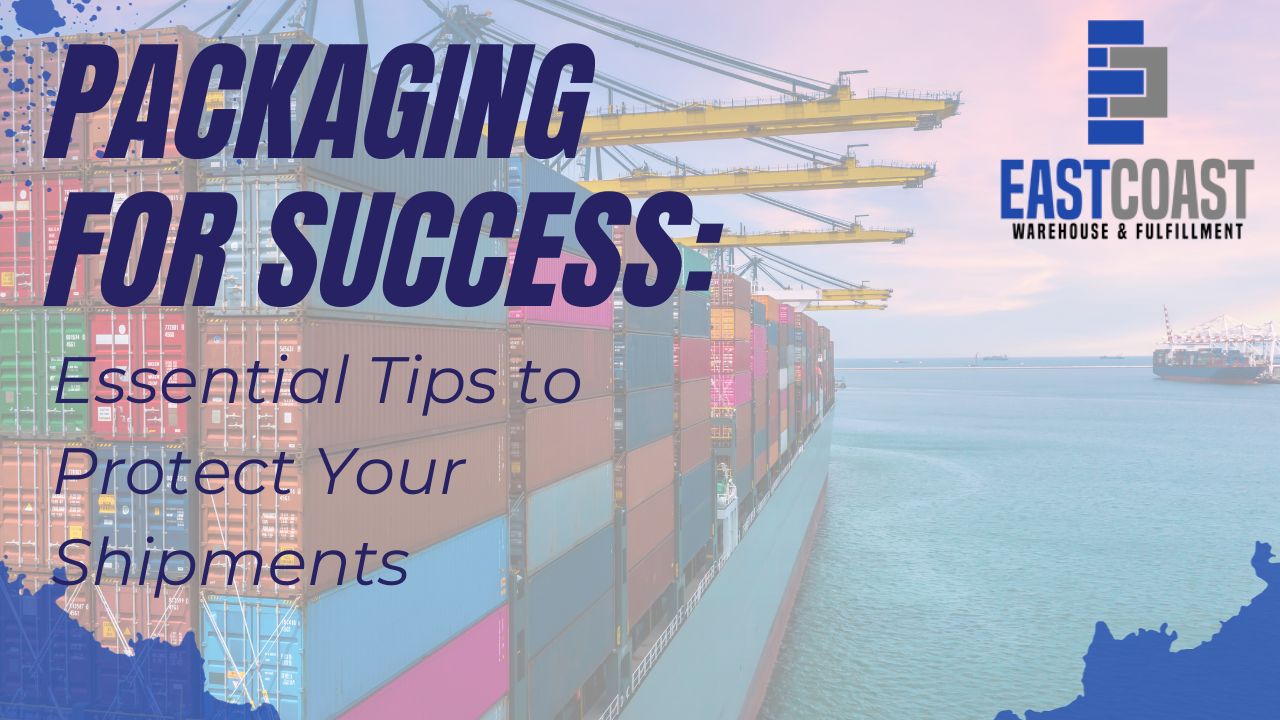
Packaging for Success: Essential Tips to Protect Your Shipments
Packaging for Success: Essential Tips to Protect Your Shipments. Packaging is a critical but often overlooked aspect of the logistics process, particularly in the world of 3PLs (Third-Party Logistics), fulfillment, and shipping. It’s a subject that deserves more attention because the way you package your products can have a significant impact on customer satisfaction, shipping costs, and the overall success of your business. In this blog post, we will explore some common packaging pitfalls and provide valuable insights on how to package different types of products effectively.
The Oversized Packaging Dilemma
We’ve all experienced the frustration of receiving a package where the box is significantly larger than its contents. This issue is not exclusive to small-scale businesses; even industry giants like Amazon can make this mistake. Oversized packaging not only wastes valuable resources but also increases the risk of damage during transit.
If you want to ensure that your packaging strategy is on point, remember this essential tip: If you can hear your product shaking or rattling inside the shipping box, it’s time to rethink your packaging approach.
Tailoring Packaging to Your Product
One fundamental principle to keep in mind is that packaging should always be tailored to the specific type of product being shipped. Different materials, whether it’s glass, plastic, clothing, or liquids, require unique packaging solutions. The ultimate goal remains constant: safeguarding your product during transit, minimizing shipping damage costs, and ensuring customer satisfaction.
Mastering the Art of Shipping Fragile Items
Shipping fragile items can be particularly challenging, but it’s an art that can be mastered with the right approach. Here are some valuable tips for ensuring the safe shipment of delicate products:
Rule 1:
Fragile Stickers Aren’t Foolproof: Contrary to popular belief, slapping a fragile sticker on a package does not guarantee careful handling. In some cases, it may even lead to rougher treatment.
Rule 2:
Include Shipping Damage Costs in Your Budget: Accept that shipping damage is an unavoidable part of the process. To mitigate its impact, allocate resources to invest in proper packaging.
Rule 3:
Learn from Proven Techniques: Rather than trying to invent new packaging methods, it’s wise to adopt strategies that have already proven their effectiveness:
Styrofoam with Form-Fitting Cutouts: This method is particularly effective for securing delicate items. Styrofoam with custom cutouts ensures that the product remains immobilized during transit while providing cushioning on all sides.
Insulated Boxes with Dividers: If you’re shipping small glass vials or bottles, consider using insulated boxes with dividers. These provide additional protection and prevent the glass from clinking during transport.
Bubble Wrap:
For items like ceramics or larger glass products, bubble wrap is essential. Place a layer of bubble wrap at the bottom of the box, wrap the product in bubble wrap, and secure it with tape. Add another layer of bubble wrap before sealing the box. Shake the box lightly to ensure the product doesn’t rattle inside.
Avoid Messy Packing Peanuts: While packing peanuts can be effective, they often create a mess and are unpopular with recipients. Opt for bubble wrap as a cleaner and equally efficient alternative.
Use Brown Packaging Paper for Less Delicate Items: If your product is less fragile, such as heavy-duty plastics, consider using brown packaging paper. It’s cost-effective and fills empty spaces while protecting the product.
Optimal Box Size: Ensure that your packaging is proportionate to your product. The box should be slightly larger than the item to allow for extra packaging material, but not so large that the product can move around freely.
Consider Shipping Insurance: Many shipping carriers offer affordable breakage insurance. Considering the potential for damage, especially when human handling is involved, investing in insurance is often a wise choice.
Consult the Manufacturer
Packaging for Success: Essential Tips to Protect Your Shipments. An often overlooked but highly valuable resource for packaging advice is your product’s manufacturer. They are experts in the materials and products they produce and can offer valuable insights into how to package your specific items effectively. Don’t hesitate to ask for their advice, as it can save you time, money, and potential mishaps during shipping.
Conclusion
In the world of logistics and e-commerce, packaging is a crucial factor that can significantly impact your business’s success. By adhering to the principles outlined in this blog post and tailoring your packaging approach to your specific products, you can minimize shipping damage, reduce costs, and ensure that your customers receive their orders in perfect condition. Remember, effective packaging isn’t just about protecting your products; it’s also about safeguarding your reputation and customer satisfaction.
